
In the fourth episode of Mammut's 'Reclimbing the Classics' series, Mammut athlete Barbara Bacher attempts to climb Jerry Moffat's hard and classic Frankenjura route, The Face, 8a+ in very cold conditions.
With this video, Mammut released a great interview with Jerry about his climbing, in particular his time spent in the Frankenjura:
When did you start climbing?
Jerry: I took up climbing at 15. When I finished school at 17, my parents expected me to start an apprenticeship, but I spent all my time climbing. I became a full-time climber, you could say.
What made you want to try The Face?
Jerry: At the time, I was living in Oberschöllenbach, sharing the apartment with Wolfgang Güllich and Kurt Albert. The Frankenjura boulderer Flipper Fietz had discovered The Face – just like many other routes in Frankenjura. Flipper wasn't interested in the climb in one go, though; if he was able to climb every single move, the route was done as far as he was concerned. There were many such projects in Frankenjura – Wolfgang showed me a number of them, including the Ekel in the Trubachtal, which I was able to climb rather quickly. It was the first IX+ in the Frankenjura. Then came The Face, that Flipper had named Das Gesicht. Wolfgang took me to the Altmühltal, where he also had a project he was working on.
How long did the first ascent take you?
Jerry: Theoretically, I could have climbed it the second day. After the "Face-Move", though, I tore open my finger and was unable to climb for a while. When the finger had finally healed, no one wanted to come to the Altmühltal with me. It was a perfect nightmare – I knew that I could climb the route and no one wanted to come along to belay me! Then, two days before I had to leave Germany, Chris Gore, a friend from England, happened to be in Oberschöllenbach. He had a driver's license, and Wolfgang gave us his car, so that we could drive to the Schelleneck pillar. I climbed the route in the first or second attempt.
Looking back, I have to mention that we were practicing the "yoyo-style" at the time. We didn't climb redpoint but returned to the ground after a fall. The rope would stay in the last bolt.
What were the rules of the "yoyo style" precisely?
Jerry: As mentioned – after a fall, you have to return to the ground at once. You cannot try out the next moves hanging in the rope. The rope stays in the last bolt, though. This makes every new climbing metre a kind of onsight. The result was that the routes could often be climbed toprope to the last bolt. Redpoint is surely a lot more exhausting!
What do you think is the main difference between climbing in the early 1980s and today?
Jerry: I think the main difference is that we invested far less time in a route back then. I needed a total of three days for The Face and I never spent any longer than that on any route. For me, this was a sign that the route was really, really difficult. Usually, we took a day for a route, and usually we also managed. No one would have put weeks or months into a project then! Another difference was that there were far fewer climbers. During the week, you virtually never met any other people in the rocks; I remember that I never met any other climber in the rock during my first visit to the Frankenjura, which took about four weeks.
You were a frequent guest in the legendary shared apartment in Oberschöllenbach; tell us about that!
Jerry: That was a great time! Wolfgang had invited me and I met Kurt and him. They were the only ones in Germany at the time, I think, who did nothing but climb. It was overwhelming to experience their hospitality. Wolfgang had just fallen into a great motivational hole and hardly climbed at all. He drove me to some rock or another in Frankenjura nearly every day and said "Try this one!" or "How about that one?" There was no envy when I managed to onsight his most difficult routes. I even felt like he was truly happy about this! Imagine the same thing today: You invite a very good climber from Germany to England and he climbs the country's most difficult routes on sight – argh! No, that was a wonderful time with Wolfgang and Kurt and the others!
Were you in the Frankenjura when Wolfgang climbed Action Directe as well?
Jerry: I was in Germany at the time, yes. I had no idea just how difficult that route was, though! I only remember that Wolfgang told me that he was working on a new route that was harder than anything he had done before. It was really strange with Wolfgang. He wouldn't climb at all for two months, and then all of a sudden, his motivation was back when he had a new project. He was obsessed with exercise, maintained a strict diet and climbed like crazy. That was the case before Action as well. I remember that he was thinner than ever. I know that he often complained about pain in his fingers. With Action, it was really uncertain whether he would manage or not. The most surprising thing about Wolfgang was that he never warmed up. He drove his car to Action, went to the starting point, harnessed up and tied on, did his starting jump and made a redpoint attempt – all cold and without a warm-up. It was unbelievable! Starting without warming up, starting to climb and actually getting to the traverse – that's unbelievable! Yes. Those are good memories.
You climbed in competitions with great success for several years; why did you stop?
Jerry: I did enjoy climbing competitions at first. But at the time, the competitions were really hard on me. You had to pay for your expenses, the organisers hardly took care of the climbers. Sometimes you sat in isolation all day before you were finally allowed to climb. During the last competition I took part in – that was in Arco in 1990 – I was sitting in isolation from eight in the morning and it wasn't my turn to climb before eleven PM! That was horrible. I was burned out. That's why I stopped climbing competitions until I would get my motivation for them back. The motivation to compete never returned, though – that was it (laughs!).
You stopped climbing about ten years ago. Why?
Jerry: I stopped climbing when I was about 40. I had done all I had wanted to do and was able to. It was hard to find new motivation. I did other things, I bought some property, that took me lots of time. If you don't climb all the time, it is frustrating to see how quickly you lose skill. There were so many other things that I couldn't do when I was still climbing. I do those things today. Surfing has become one of my new great passions! I also like playing golf and skeet shooting – there are things other than climbing, too... (laughs!)
Keep an eye out for the last two episodes, one of which will include Sean McColl attempting Hubble, Ben Moon's 8c+ testpiece at Raven Tor.


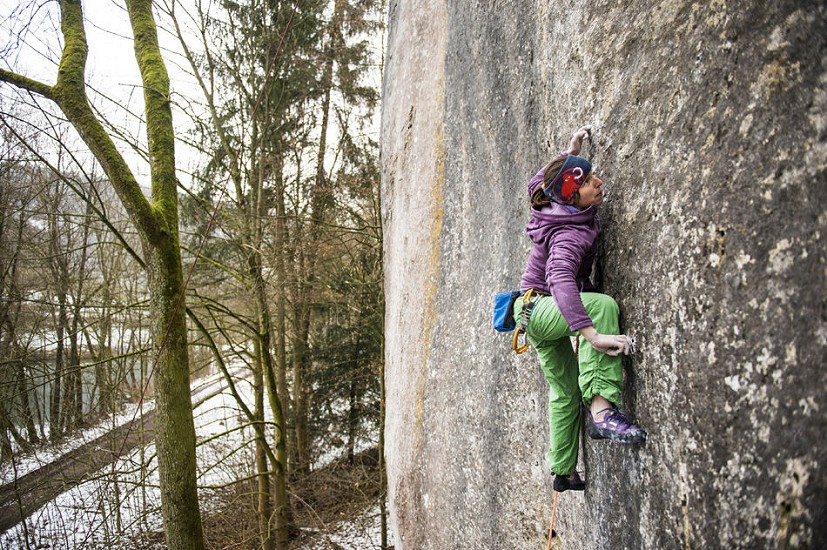




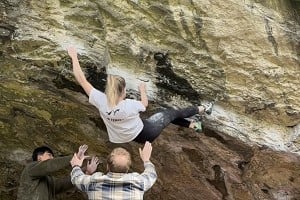
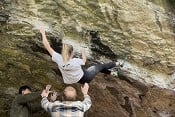
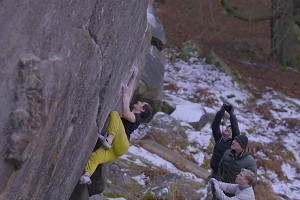
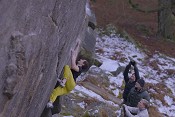
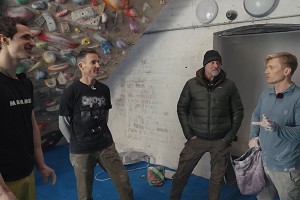
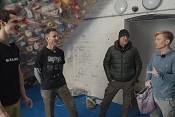

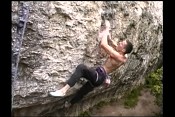
Comments